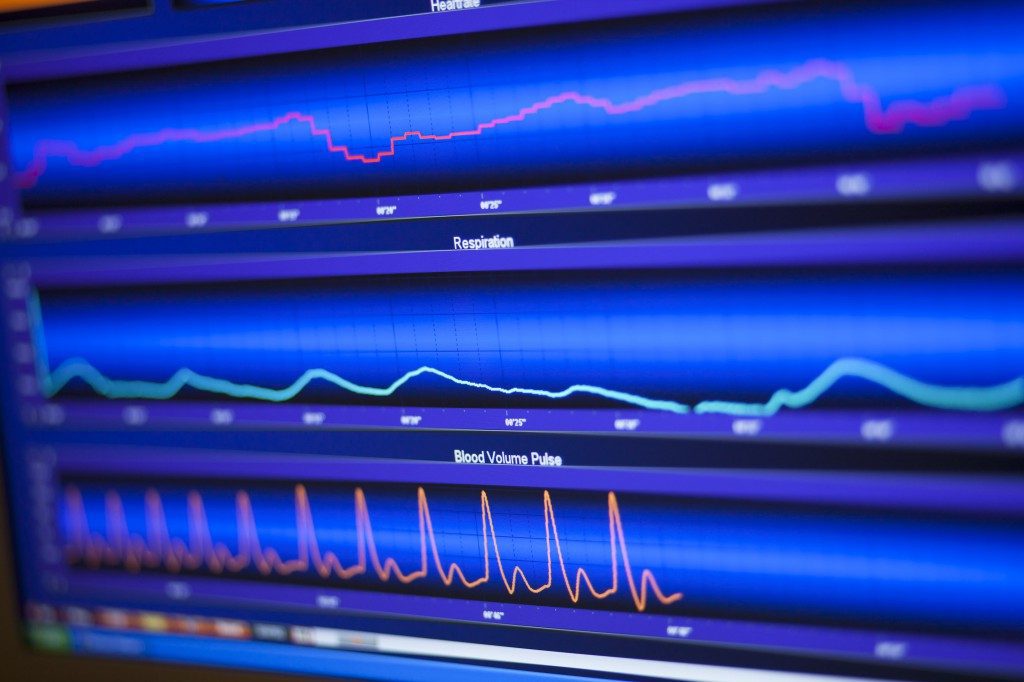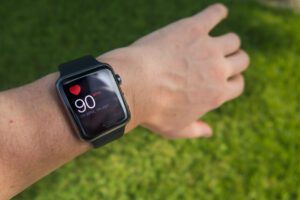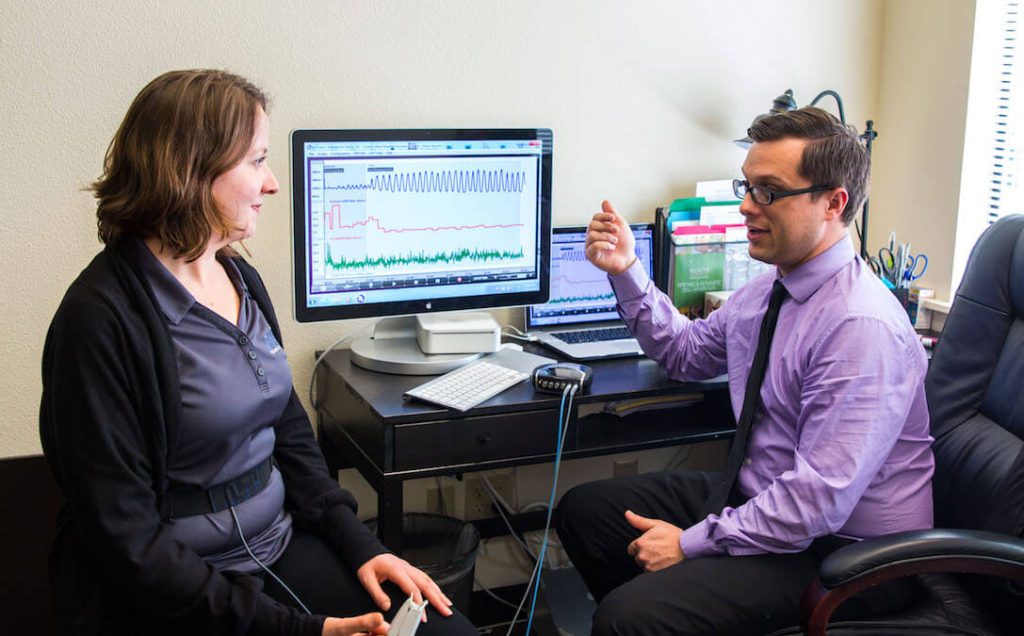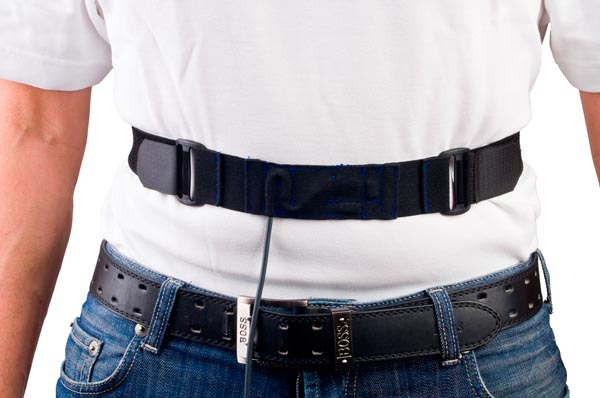What does it mean to truly maintain and optimize your cardiovascular health? This article will…
Heart Rate Variability
 Heart rate variability is a term that is starting to flood the health and wellness scene. However the concept itself has been around for much longer, finding it’s origins in the field of biofeedback and applied psychology. This article will help you understand more about what heart rate variability is, and how it can be a helpful assessment tool in optimizing ones own health and wellness. Heart Rate Variability has clinical utility in areas such as stress management, lowering anxiety, improving blood pressure & cardiovascular tone, and improving athletic & fitness performance.
Heart rate variability is a term that is starting to flood the health and wellness scene. However the concept itself has been around for much longer, finding it’s origins in the field of biofeedback and applied psychology. This article will help you understand more about what heart rate variability is, and how it can be a helpful assessment tool in optimizing ones own health and wellness. Heart Rate Variability has clinical utility in areas such as stress management, lowering anxiety, improving blood pressure & cardiovascular tone, and improving athletic & fitness performance.
What is heart rate variability?
Heart Rate Variability (HRV) is a physiological variability of the time between heart beats. This time between heart beats can vary consistently, develop coherence with your breath and nervous system, or be be altered by both chemical, electrical, or physical stimuli. Everything from exercise, observed stress, sleep, medications, food, to the environmental influences your body takes in can have an effect on your heart rate and heart rate variability. In terms of overall health, the strength of the difference between your minimal heart rate and your maximum heart rate can often by analyzed to determine the ability for your heart to respond appropriately to the demands it faces, particularly if your heart rate variability demonstrates coherence.
Average Heart Rate vs Heart Rate Variability
 Average heart rate, as measured by most portable devices such as a Fitbit, Apple Watch, or a Polar heart rate monitor. Many of these devices only generate an average heart rate, or track highs and lows during the day, determining if you are getting to a targeted heart rate zone for a particular exercise, or if you are over-training. Commonly these tools also only collect a heart rate sample every few seconds, or don’t provide data support to generate heart rate variability. Average heart rate can be a great tool to understand the effects of your cardiovascular system during exercise and track your overall progress of cardiovascular training.
Average heart rate, as measured by most portable devices such as a Fitbit, Apple Watch, or a Polar heart rate monitor. Many of these devices only generate an average heart rate, or track highs and lows during the day, determining if you are getting to a targeted heart rate zone for a particular exercise, or if you are over-training. Commonly these tools also only collect a heart rate sample every few seconds, or don’t provide data support to generate heart rate variability. Average heart rate can be a great tool to understand the effects of your cardiovascular system during exercise and track your overall progress of cardiovascular training.
 HRV is best used during a rested state (usually first thing in the morning or during rested activities such as meditation). It is a great tool for understanding overall health, resilience, and ability to tolerate stress from all sources. Measured typically as the time between beats, or the R-R interval.
HRV is best used during a rested state (usually first thing in the morning or during rested activities such as meditation). It is a great tool for understanding overall health, resilience, and ability to tolerate stress from all sources. Measured typically as the time between beats, or the R-R interval.
While heart rate focuses on the average beats per minute, heart rate variability (HRV) measures the specific changes in time (or variability) between successive heart beats.
The Autonomic Nervous System & The Vagus Nerve
The Sympathetic Nervous System (SNS) is responsible for the fight/flight mode of organisms. It raises heart rate, blood pressure and indirectly respiration rate. It dampens currently irrelevant homeostatic processes, but stimulates immediate availability of energy including catecholamine(dopamine, epinephrine, norepinephrine) release.
The Parasympathetic Nervous System (PNS) acts as an opposing force. It is the rest/digest system of the organism. It lowers heart rate, respiration rate and increases digestion. The Vagus Nerve is the main affector and effector of the PNS, and can be directly stimulated to promote nervous system relaxation.
Balance of these two parts of the nervous system is key to understanding the clinical and medical implications of Heart Rate Variability training. Finding oneself with poor HRV, may be due to the fact that the nervous system may no longer have enough energy to sustain itself during the day, and additional fuel is necessary to have stable blood sugar.
Heart Rate Variability Training

Here are just a few ideas you can begin to use, and you can train or coach your heart rate variability to be more consistent, coherent, and balanced with some common tools we teach in our biofeedback sessions at Rebel Med NW:
Diaphragmatic Breathing
 The first is the most ideal and convenient way to generate a coherent heart rate variability for your self that also can affect many other body systems through vagus nerve stimulation, and a natural physiological phenomenon call respiratory sinus arrhythmia (RSA). Controlled and paced breathing can begin to create this pattern in many individuals, and uses the principle that the vagus nerve is stimulated when the diaphragm is engaged through a full exhalation.
The first is the most ideal and convenient way to generate a coherent heart rate variability for your self that also can affect many other body systems through vagus nerve stimulation, and a natural physiological phenomenon call respiratory sinus arrhythmia (RSA). Controlled and paced breathing can begin to create this pattern in many individuals, and uses the principle that the vagus nerve is stimulated when the diaphragm is engaged through a full exhalation.
Many times the experience that we obtain from performing a breath meditation can be improved upon with biofeedback training. Biofeedback sensors including a respiration belt can be used to help optimize the breath, promote an effortless breath, and can be used to create a muscle memory of different paced breathing techniques. By determining where a part of the body is holding tension, additional work could be performed to release the area via physical medicine, which in turn could ultimately improve a persons ability to breathe fully and effortlessly without pain or guarding.
While there are many different breathing approaches available, each type of breath-work has different purposes to control and modulate the nervous system. The size of the person, their past history of learning how to breathe for swimming, or playing music are two examples how someone trained themselves to breathe for a purpose. With a trained biofeedback provider, you would learn different controlled breathing practices that improve mindfulness and awareness of ones own breath, while improving upon improved ways of breathing to command stress resiliency.
Resonant Frequency Assessment

At Rebel Med NW, our biofeedback practitioners can assess resonant frequency using one of only a few FDA approved devices for clinical biofeedback, a Nexus 10. This device and its associated software along with a board certified biofeedback practitioner can with analyze respiration patterns, temperature, and HR sensors to determine an ideal breathing rate that maximizes heart rate variability.
Face-to-Face Social Connectedness
Balancing social support through face to face connectedness through healthy normal social interaction is a key to regulating vagal tone and activity. Often the facial expressions, social cues, and observation of a conversation will send our body into different states of processing, including rest and digest states, fight or flight states, and even immobilization responses. The polyvagal therapy as coined by Dr. Stephen Porges, helps to explain the importance of understanding and generating balance to the nervous system.
Conditions benefited by Heart Rate Variability (HRV) Training
Blood Pressure including pre-hypertension and hypertension
Hyperlipidemia
Diabetes and post-prandial stress
Oxidative markers including c-reactive protein &
Immune Function
Inflammatory Bowel Disorders (crohn’s disease & ulcerative colitis)
Irritable Bowel Syndrome (constipation or diarrhea)
Chronic Fatigue
Burnout / Overwork / Adrenal fatigue
Anxiety & Depression
Insomnia and Sleep difficulties
Attention / concentration deficits.
HRV Devices

Nexus 10 with biotrace+ software – used in biofeedback training sessions at Rebel Med NW (HR, Respiration, Temp, Sweat Response, & EMG)
Emwave Pro by Heartmath – professional level or advanced home use
Alive by Somatic Vision – professional level equipment
Polar HR 10– Fitness HR strap that can be used with many HRV apps including Elite HRV
HRV Apps
Elite HRV – Either using a Polar HR 10 or your finger over the camera of your smartphone.
Inner Balance by Heartmath
Welltory – user friendly app to review integration of HRV into many other fitness apps, uses camera or external HR sensor.
Additional Resources about HRV
Heart Rate Variability: A Deep Primer
Harvard Health: Heart Rate Variability
Disclaimer & About the Author:
 Dr. Andrew Simon, is a naturopathic physician, is board certified in biofeedback. In addition to having recently attended a STENS biofeedback workshop, as well as regular practicum work during his residency in 2013 where he was mentored in mind body medicine & Biofeedback from
Dr. Andrew Simon, is a naturopathic physician, is board certified in biofeedback. In addition to having recently attended a STENS biofeedback workshop, as well as regular practicum work during his residency in 2013 where he was mentored in mind body medicine & Biofeedback from
Dr. Brad Lichtenstein. Originally obtaining his BCIA biofeedback certificate in 2016. Any advice provided above is strictly informational, and if attempted at home, should be with guidance and follow-up with a provider familiar with biofeedback and mind body medicine techniques to address many common natural cure symptoms.
Dr. Andrew Simon is the clinic director of Rebel Med NW, and frequently explores the intersection between natural health methods and technology. Dr. Andrew Simon was voted top doctor in Seattle Met Magazine, three years in a row.
References:
Gerritsen RJS, Band GPH. Breath of Life: The Respiratory Vagal Stimulation Model of Contemplative Activity. Front Hum Neurosci. 2018;12:397. Published 2018 Oct 9. doi:10.3389/fnhum.2018.00397 Link
Lehrer PM, Gevirtz R. Heart rate variability biofeedback: how and why does it work?. Front Psychol. 2014;5:756. Published 2014 Jul 21. doi:10.3389/fpsyg.2014.00756 Link
Neurosci Biobehav Rev. 2012 Feb;36(2):747-56. doi: 10.1016/j.neubiorev.2011.11.009. Epub 2011 Dec 8. Link
Appl Psychophysiol Biofeedback. 2014 Dec;39(3-4):171-80. doi: 10.1007/s10484-014-9253-x. Link
Int J Psychophysiol. 2001 Oct;42(2):123-46. Link




This Post Has 0 Comments